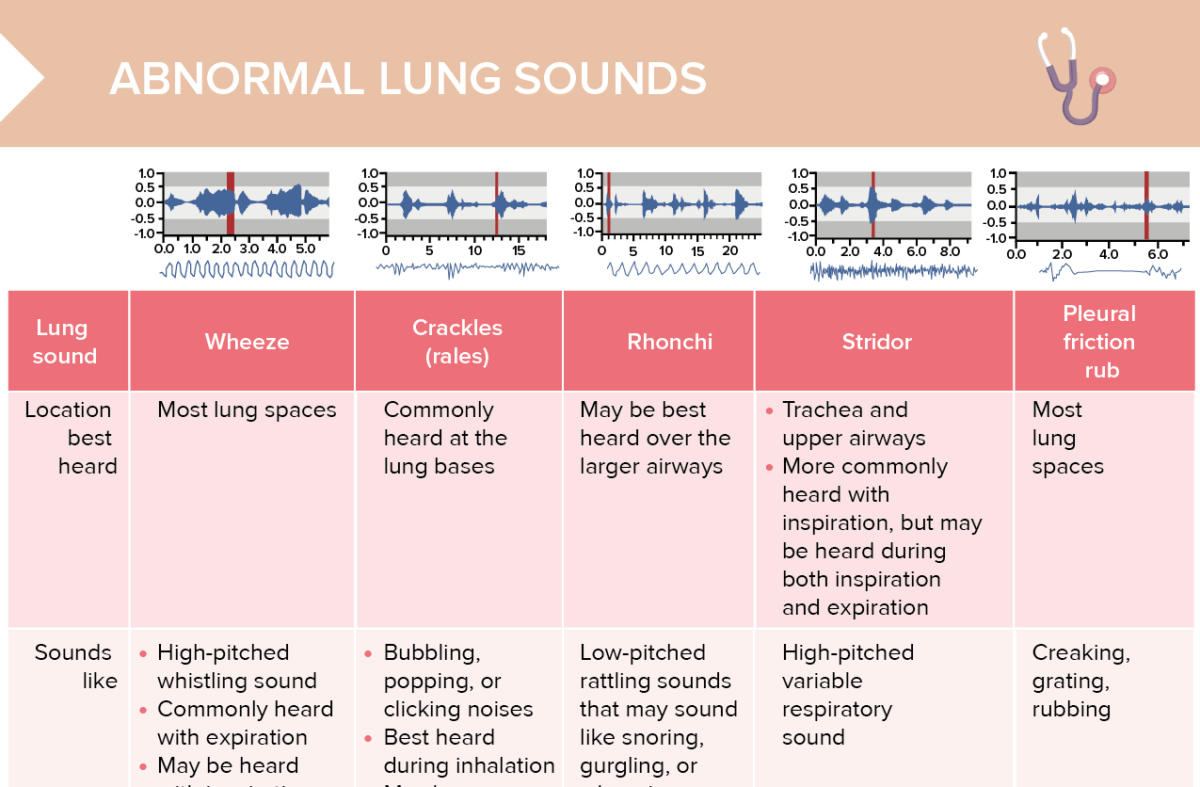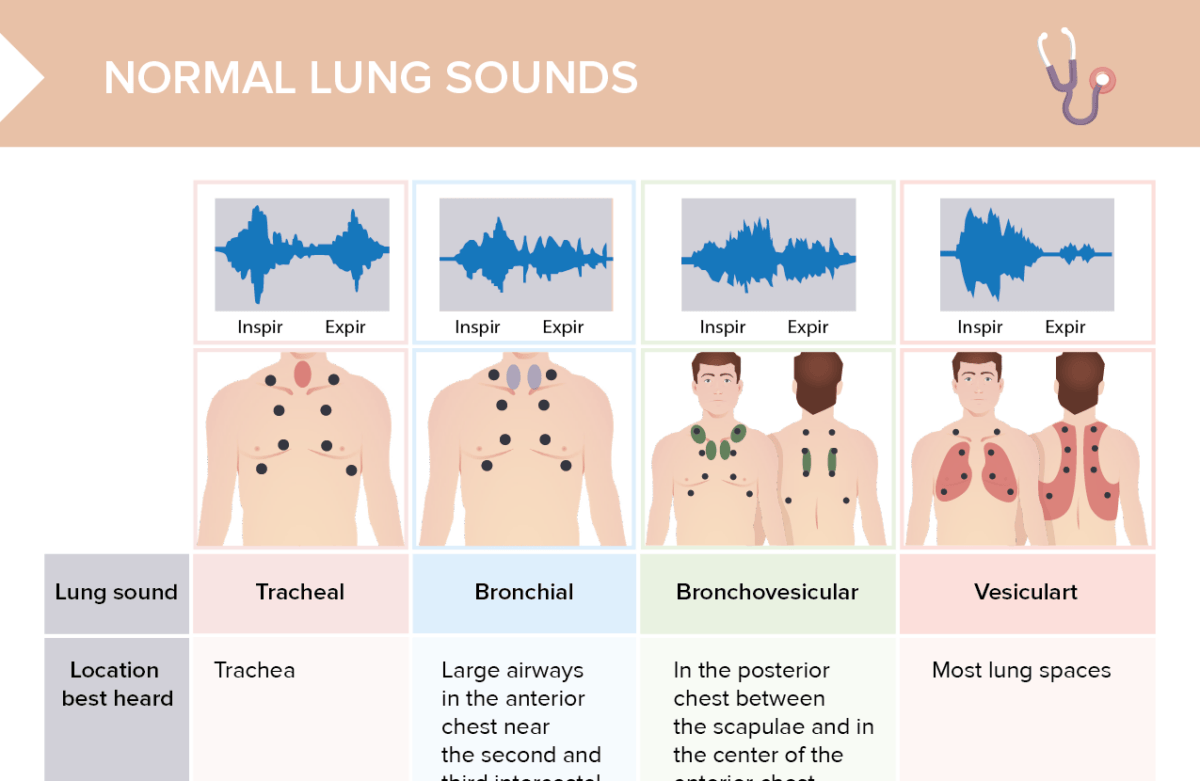What is auscultation?
Auscultation is the process of listening to sounds produced by the body using a stethoscope.
What are normal lung sounds?
Normal lung sounds are the sounds produced by the lungs and airways during normal breathing. They are soft, blowing, or rustling sounds that can be heard in most lung spaces.
What are the different types of normal lung sounds?
The different types of normal lung sounds are:
- Bronchial sounds
- Tracheal sounds
- Bronchovesicular sounds
- Vesicular sounds
What do normal lung sounds sound like?
- Bronchial lung sounds: loud and high-pitched
- Tracheal lung sounds: harsh, like air in a pipe
- Bronchovesicular lung sounds: softer than bronchial sounds with a tubular quality
- Vesicular lung sounds: soft, blowing, or rustling
Where to listen to lung sounds
The different types of lung sounds can be heard best in the following locations:
- Bronchial lung sounds: over the large airways in the anterior chest near the second and third intercostal spaces
- Tracheal lung sounds: over the trachea
- Bronchovesicular lung sounds: in the posterior chest between the scapulae and in the center of the anterior chest
- Vesicular lung sounds: over most lung spaces
Charting normal lung sounds: how to document lung sounds
When charting normal lung sounds, it’s important to be concise, clear, and descriptive. If lung sounds are normal, they’re often described as “clear to auscultation bilaterally” or “CTAB” (an abbreviation of the same phrase). This means that you heard the expected breath sounds and there were no abnormal or extra sounds.
A more detailed description could be:
“Normal vesicular breath sounds heard over the majority of the lung fields. No adventitious sounds noted. No wheezing, crackles, rhonchi, or stridor.”
This documentation indicates that the expected sound (vesicular) was heard, specifies where it was heard (majority of the lung fields), notes the absence of any additional (adventitious) sounds, and explicitly mentions some of the specific sounds you listened for but did not hear (wheezing, crackles, rhonchi, stridor).

